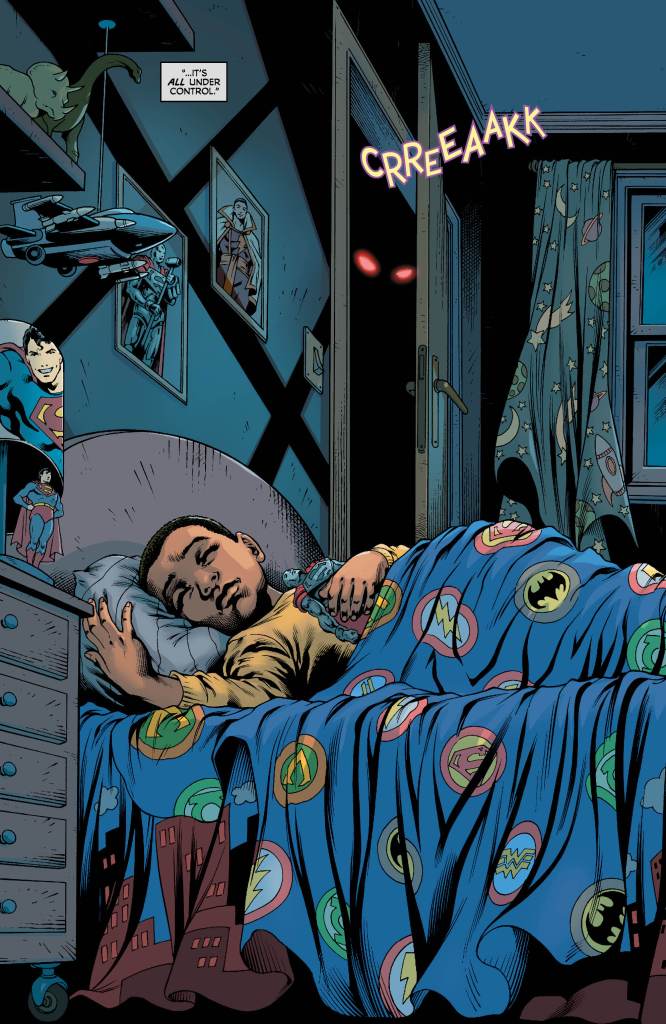Written by: Kate Perkins
Art by: Jose Luis, Ray McCarthy
Superwoman #10 narrative was disjointed and jumped periods of time. While the issue was still strong, it left readers with a sense that there was more to the story. Superwoman #11 fills in some gaps of the plot, but still jumps periods of time and eventually returns to where issue #10 started. As a narrative device, this is an interesting way to build interest for readers through teasing the action and building the emotional significance. Unfortunately, it leads to more questions than it does answers.
The story arc is engaging and reveals a personal depth to the Irons household and family. Writer K.Perkins takes moments to highlight the loss felt by the abduction mentioned in the previous issue, but the emotion is lessened by how quickly the story jumps time periods. Readers see the moments before the abduction in this issue, but there are emotional moments missed by jumping time periods. If there was time spent on the impact of the abduction and the emotional toll that it takes on families, the relevance of the plot could be even greater. Families facing that loss deal with a range of emotions and while there are glimpses here, the story would be stronger with additional time spent on the event.
Even still, K. Perkins characters are compelling. Lana concern over the abduction and her hidden guilt create emotional depth. Lana’s guilt is implied as she mentions information to the police,  but artist Jose Luis captures the blame that Lana places on herself through the artwork. Jose Luis takes the place of artist Stephen Segouia this issue and the character models are well done. Luis’ characters are more human than super hero in their portions and body positions and this works well for such a personal tale of abduction. Lana’s human depiction matches the human emotions that K.Perkins writes for her.
but artist Jose Luis captures the blame that Lana places on herself through the artwork. Jose Luis takes the place of artist Stephen Segouia this issue and the character models are well done. Luis’ characters are more human than super hero in their portions and body positions and this works well for such a personal tale of abduction. Lana’s human depiction matches the human emotions that K.Perkins writes for her.
The final confrontation of this issue also reflects Lana’s humanity. K.Perkins does not take the easy way out by having the superhero save the day. Lana may have super powers, but she is still ultimately human. This vulnerability is what makes Perkins’ Lana Lang so compelling. This is a character that readers can understand and aspire to. If only the story was paced in a way that made easier to understand. While the pages of issues #10 and #11 could be spliced together differently, the ending is still similar. Superpowers do not solve all problems, but what characters do when faced with that can make them super.
K. Perkins again delivers strong and emotional characters in Superwoman #11, but the plotting jumps too quickly to deliver the emotion the story deserves. Fortunately, this arc is not finished and neither is Perkins time with Lana Lang.


